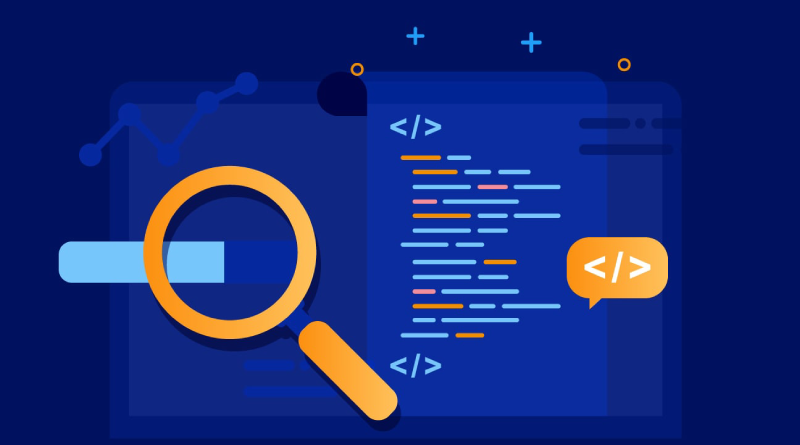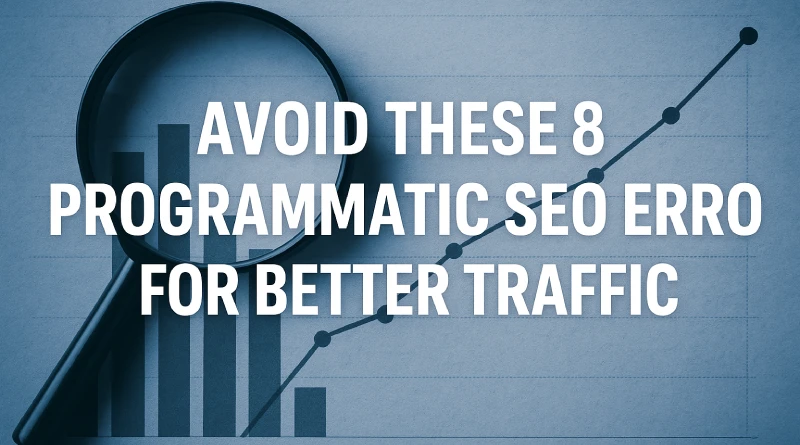Avoid These 8 Programmatic SEO Errors for Better Traffic
Programmatic SEO (pSEO) has revolutionized digital marketing by allowing organizations to generate high scale organic traffic through thousands of target web pages automatically. PSEO adopted by such giants as Tripadvisor and Zillow uses templates and data to target the long-tail keywords and, thus, could increase the websites traffic by a factor of 30-50, compared to the more conventional practices, according to Ahrefs data. But one single misstep can result in Google sanction, resource wastage and crumbling of rankings. With AI update-driven search engines so focused on the value to the user, avoiding these traps is essential to long-term success in 2025. Identifying the best pSEO mistakes, this guide provides the relevant, practical remedies, some insight on unique aspects, and the local information to achieve AdSense-conforming strategies, and high quality.
1. Creating Thin or Low-Quality Content
Unworthy, oversimplified, shallow reconstruction in the pages produced, irrespective of length, generic library-repeat writing, fake writing written by artificial intelligence, etc. may sit at the top of the leaderboard of errors. Google Helpful Content Update severely punishes the so-called thin pages, deindexing or putting them on the last pages. Any bounce more than 70 indicates irrelevance, according to SEOMator.
How to Avoid : See the value in dynamic components such as user marketings, Frequent Desk Questionnaires, or local makeovers. Monitor AI devices to create high-quality interesting content. Examples include; add special intros or comparison charts to distinguish between pages.

2. Generating Duplicate or Cannibalized Content
Sharing the same templates can common occurrence of but duplication of authority and will lead to keyword cannibalizing, resulting in too many photos sharing similar query thereby negative ranking. Duplicative modifiers (e.g. best in [city] of [product]) do not help this problem.
How to Avoid : Consultant tags to pool link equity. Change content with industry or testimonial specific information. Audit Screaming Frog – to eliminate duplicates and 125 subjects—to be unique.
3. Poor Keyword Research and Ignoring Search Intent
Using irrelevant keywords, focusing on intent without ensuring user intent is a page that cannot be converted and may be perceived as low-value by Google. Long-tail searches are the norm (68 percent of all in 2025) (Statista) yet misaligned intent causes abandonment.
How to Avoid : Check that entries with low competition (KD <30) are possible, using either Ahrefs or SEMrush. Clustering SERP to correspond to intent, whether informational or transactional, and add supporting clues like maps on local searches.
4. Neglecting Internal Linking and Site Structure
Orphans with no links would make crawling and indexing more complex instead of increasing its visibility. Weak linking does not distribute authority on the site.
How to Avoid : Construct a strong system using breadcrumbs and contextual links. Build hub pages with links to sub-pages and autolink via scripts, with different anchor text to scale.
5. Overlooking Technical SEO Elements
Images or code bloat are not optimized, and Google prefers under 3-second pages. There is a loss of rich snippets when you do not pay attention to mobile optimization or structured data, reducing CTR by 20-30% (SEOMator).
How to Avoid : lazy-loading, CDN use, clean code. Use schema markup (e.g. LocalBusiness) to improve SERPs. Google page speed user audits are done regularly.
6. Rushing Publication Without Testing
A move to publishing thousands of pages simultaneously has risks of duplicate-ish flags and index bloat. Inaccuracies caused by poor data stacking results in loss of trust, which was a point raised in conversations at Reddit.
How to Avoid : Test 3- 5 pages with the Google search console to test traffic potential. Get ethically sourced data APIs or proprietary sets and clean up the data. Incrementally test performance as the scale increases.
7. Failing to Update and Refresh Content
Slow loading that has old information (eg, shop prices) will raise the rate of bounces as Google rewards freshness.
How to Avoid : Plan automated updates of real-time datafeeds. Measure and improve content work involved in practices that should be monitored and updated using a driving force (trend).
8. Relying Solely on Automation Without Human Oversight
In excessive automation, robotic and low-throughput contents are generated demolishing spam filters.
How to Avoid : Be creative, implement automation but verify the intent with human review. Video ephemera, such as Zapier, simplify things, whereas editorial scans minimize mistakes.
Unique Insights: Ethics and Scalability in the AI Era
An important lesson : pSEO powered by AI is prone to reinventing the same mistakes repeatedly, which can be easily subjected to algorithmic analysis. Custom, non-corporate content with human elements (e.g. Q&A: Styled after Reddit) increases interaction by 40 percent, according to Backlinko. Pacing is also important–hurrying sounds like spam, not to mention failed campaigns. Particularly testing small batches, and focusing on ethical use of data (no scraped content without permission), will be consistent with Google 2025 emphasis on quality.
Local Context: India’s Digital Opportunity
pSEO powers e-commerce companies such as Flipkart, which have 900 million internet users in India (TRAI 2025). But local sites have borne the brunt of thin content penalties, according to Nasscom. In India, where the $100 billion digital economy (Ficci-EY 2025) has misalignments such as hyper-local pages (e.g., apartments in Andheri) and intent can connect dots well together (mindshift in mobile driven markets, 70% of searches, Nasscom). No-code software such as Webflow would enable small businesses in Bengaluru to compete, with the requirement that they adhere to quality standards.
Conclusion: Sustainable Success in SEO
The trick to pSEO is how to avoid the following traps by remarkable quality, intentionality, and automation of ethics. Verify highly, test, and update materials to keep content incredibly Google compliant and ad friendly. A business can master scale and value, as well as rise above niche searches and succeed in the digital age.
Disclaimer
The information presented in this blog is derived from publicly available sources for general use, including any cited references. While we strive to mention credible sources whenever possible, Best Website Design Agency in Mumbai does not guarantee the accuracy of the information provided in any way. This article is intended solely for general informational purposes. It should be understood that it does not constitute legal advice and does not aim to serve as such. If any individual(s) make decisions based on the information in this article without verifying the facts, we explicitly reject any liability that may arise as a result. We recommend that readers seek separate guidance regarding any specific information provided here.

